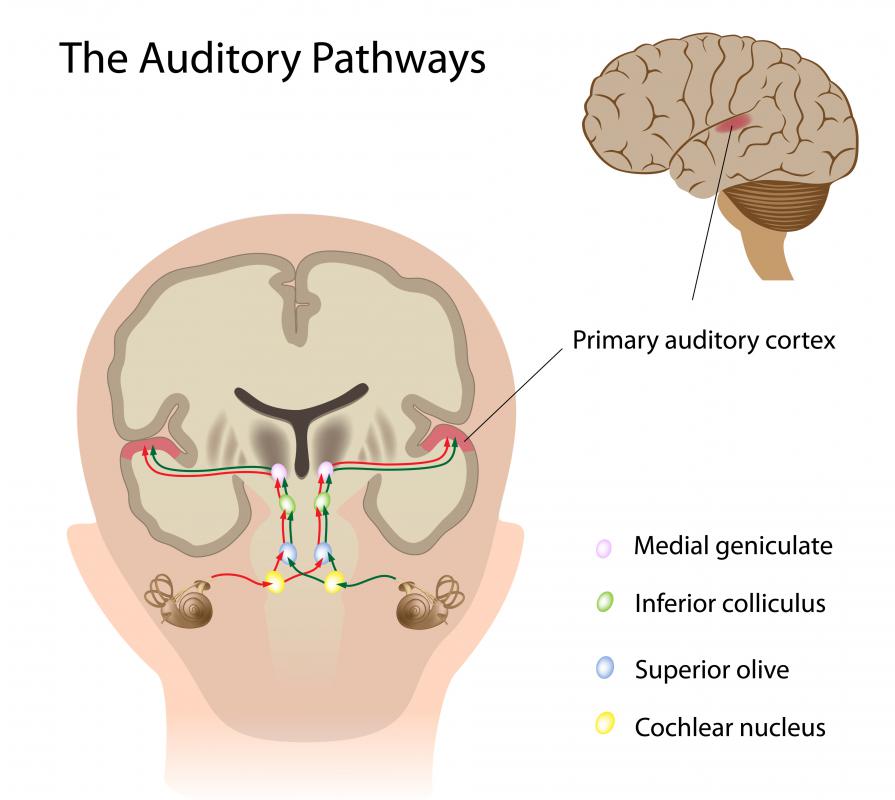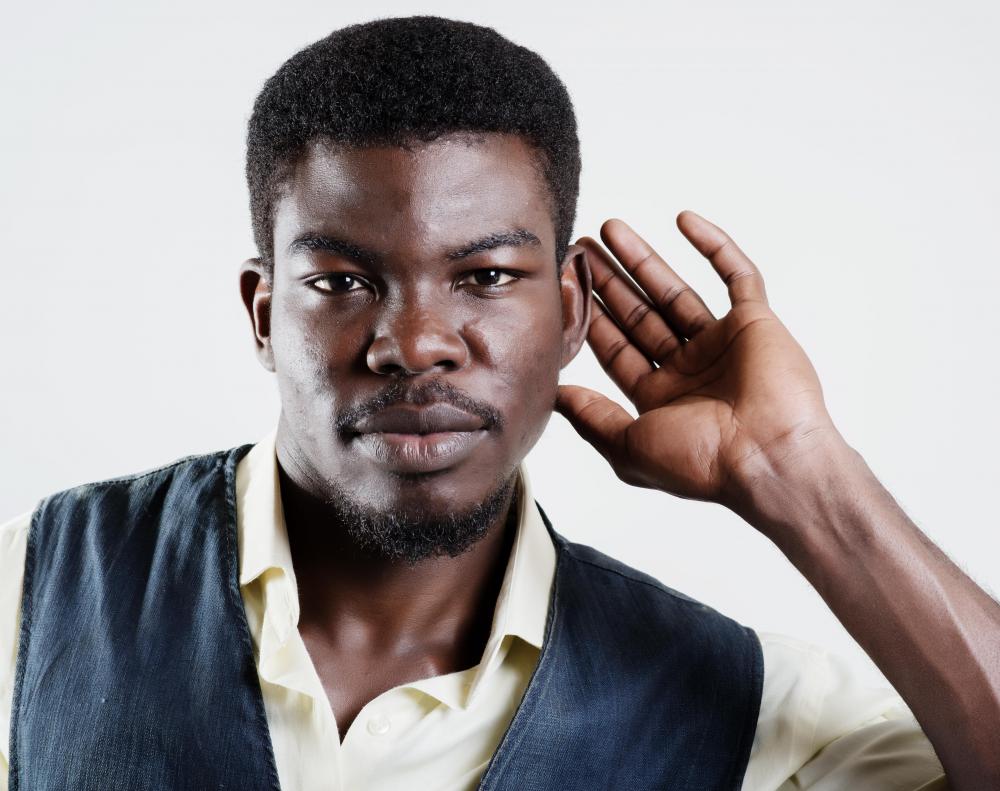At WiseGEEK, we're committed to delivering accurate, trustworthy information. Our expert-authored content is rigorously fact-checked and sourced from credible authorities. Discover how we uphold the highest standards in providing you with reliable knowledge.
What Are the Different Types of Auditory Processing Disorder Treatment?
Auditory processing disorder treatment ranges from one-on-one speech therapy sessions to computer devices that train people to differentiate sounds. Some auditory processing disorder treatments use music and movement to stimulate the central nervous system. In controlled settings, such as a classroom, a person might wear a device that permits him or her to focus on a particular speaker, who wears a microphone that emits sound.
Movement therapy, also called neuro development therapy, represents an auditory processing disorder treatment using exercise to enhance a patient’s sensory abilities. This therapy is based on the concept that people are born with primitive reflexes that permit sorting information outside the womb. In a few years, postural, or voluntary reflexes, take over that function.

If a child does not crawl, walk, and perform other motor activities normally, it delays neurological development, according to movement therapists. Voluntary reflexes control equilibrium, posture, and physical movement, which are linked to neurological development. This form of auditory processing disorder treatment tailors exercises to a person’s level of sensory deficit.

Some people use listening systems at home as an auditory process disorder treatment option. They record their voice and play it back while performing verbal exercises to aid recognition of particular sounds. This system might stimulate brain activity to help process difficult sounds.
An auditory listening program stimulates certain areas of the ear by exposing it to sounds with defined tones and pitch. As the person is exposed to these sounds, the neurological pathways might get stronger in the inner and middle ear. Sometimes music is used in this form of auditory processing disorder treatment.
Auditory memory training helps patients hear basic information while ignoring distractions considered unimportant. Listening training might help a patient ignore background noise that impedes his or her ability to discern a particular voice. This type of auditory processing disorder treatment might be done at home or in a speech therapist’s office.
People with this condition typically do not understand speech in a noisy environment. They cannot interpret similar-sounding words and often ask the speaker to repeat what he or she is saying. Audiologists determine the type of auditory process disorder by testing the level of difficulty with normal hearing. The doctor might suggest strengthening other skills to compensate for the disorder. The treatment options do not work for everyone.
AS FEATURED ON:
AS FEATURED ON:












Discuss this Article
Post your comments